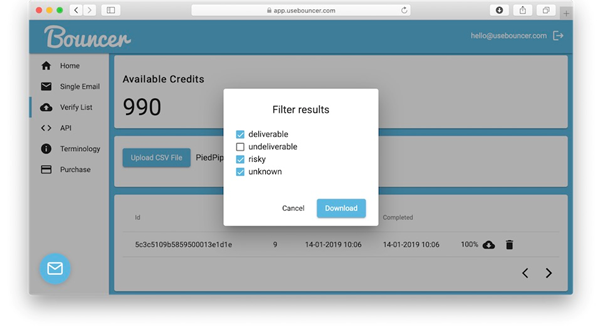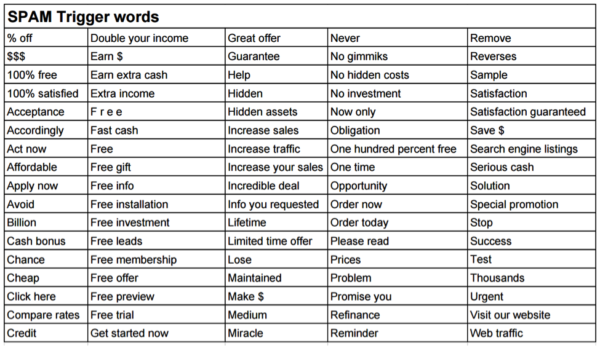Did you know that only about 79% of genuine marketing emails reach their subscribers’ inboxes? The reasons are plenty, but primarily, the senders do not take all the precautions to stay out of the spam folder.
And while there are many things that you can do in this regard, there is one that you cannot miss: doing an email spam test. Today, we’re going to show you what these tests are and how you can employ them so that your content reaches every email address on your list.
Why is an email spam test important?
Email spam testing is essential to avoid spam filters and spam traps. But first of all, it’s crucial to understand what these are and how they work.
A spam trap is usually the first line of defense against spammers from an ISP or internet service provider. They are usually email addresses set up with the main purpose of identifying and trapping spammers. If your email hits one of these addresses, the ISP will flag you immediately as a spammer, blocking your IP address and domain name, ultimately causing deliverability rates to drop dramatically.

Even if you eventually manage to get yourself removed from the block list, restoring your sender reputation can take a lot of time and effort after hitting a spam trap. This is where email address testing helps – but more on that in a minute.
Spam test for spam filters
Spam filters are another line of defense that ISPs use against spam. These programs use various criteria to filter out any emails that may be considered spam, prevent these messages from reaching inboxes, and have them sent directly to the spam or junk folder instead.
Spam filters are set up to carefully analyze every aspect of the email message to ensure that any irrelevant or spammy content will not reach the subscriber, which is why it’s essential to understand how spam filters work and what they look out for when testing your emails for spam.
While they are useful, they can actually be your foe in the fight for a better email delivery rate.
Check email for spam to avoid spam reporting
Another aspect of avoiding spamming you will need to be aware of and test for when sending an email marketing campaign is when subscribers themselves report your email as spam. This is usually easy to do from their email inbox interface, as most ISPs have a simple button that can be clicked to report an email as spam, immediately filtering all future emails from that sender to the specific recipient’s spam folder.
There are many reasons subscribers might report your email as spam, and not all of them are because you are spamming with your email marketing efforts. Sending irrelevant content by not segmenting your email lists correctly, for example, could see your subscribers report your legitimate content as spam.
Subscribers might also report your email as spam if they are unsure who has sent it, if you’re sending emails to them too often, or if your subject line or email body has too many common spam words.
Last but not least, there is a high chance of landing in the spam folder if you’re sending out cold email campaigns often to a large number of email accounts. If you auto-send emails to a large number of unknown addresses, you need to do frequent email address validation to stay out of the spam folder and prevent email bounces.
Spam check email for trigger words
You must pay particular attention to the words used in the content of your email subject line and the email body. This will help you avoid getting your emails sent to the spam box due to the presence of spam trigger words.

Due to the overuse of certain words by spammers in their email marketing efforts, such as ‘make money’, ‘get it now’, ‘fantastic deal’, ‘100% satisfied’, or even ‘discount’, using these words could see your legitimate marketing emails sent to the spam box. There are various tools available that you can use to crawl your email message and check for the presence of trigger words that might alert the spam filter to a potential problem.
Along with this, it’s a good idea to better understand the most common spam trigger words and be creative with your copywriting to use alternatives to them.
Since spam trigger words are pretty common, like ‘discount’ or even ‘click here’, it can be concerning for marketers – will your email end up in the spam box because you’re offering a legitimate discount?
Thankfully, the spam filter will check various aspects of the email, including your subject line, your sender score or reputation, whether or not the recipient has added you as a contact, how many spam trigger words are included, and more.
How to run a spam test
There are a few different ways that you can check your email for spam before you send it. The two most common options are to run a seed test or to run the email through your SMTP mail server first.
A seed test is the most recommended option for checking deliverability, as this test is a more thorough option when it comes to checking for different aspects of the email that might lead it to be flagged as spam. The test will review your subject line and email content and check if your domain or IP address has been blacklisted.
How to use a seed test to run a spam check
A seed test is the best option if you use an email service provider to send your email. First, you will need a seed list with email addresses, which is a list of internal emails you can send a test email to. This could include friends, co-workers, and even relatives.
Ideally, you will want to gather a list covering a range of different popular email clients and devices, so you can check if your message is going through different email spam filters. Some email marketing programs will also provide seed lists for you, allowing you to easily run a spam test this way with a single click before you send an email.
To get the most accurate results, it’s essential to send the test email to your seed list directly rather than pasting the list into a forward or CC/BCC, as this won’t work.
What to do with the spam email check results
Once you have the results of your spam test back, what do you do with them? Unfortunately, many popular spam filters do not always give you further details on why your email has failed, to make it harder for spammers to figure out new ways to get around the checks.
Most of the time, you will only get a ‘fail’ or ‘pass’ result, making it harder for you to figure out the specific reason. In this case, you can use various tools that are designed to check your content and provide you with further information.
You can also take the time to review the email’s content (as well as the email design) or check your IP address or domain reputation to find out if this might be contributing to the failure.
Email best practices for passing a spam checker
Since the results of why your message didn’t make it through the spam filter might not always be available, it is recommended that you follow best practices when creating your marketing emails. Some of the main best practices that you can follow to avoid being listed as a spammer include:
Avoid buying email lists
While purchasing an email list might seem convenient, it can often lead to more problems than it is worth. Sending marketing messages to purchased lists will often violate the Terms of Service for most ISPs and is generally frowned upon because it violates GDPR laws and the privacy of the people to whom the addresses belong, as they have not permitted you to contact them.
Even seasoned email marketing pros do not recommend purchasing lists as there is simply no good return on investment.
Regularly clean your email list
Maintaining good email list hygiene will help avoid getting caught by spam traps. It’s also worth employing a double opt-in method of subscribing for your subscribers. While this might ultimately lead to a smaller list, you can be assured that every address on your list belongs to somebody who wants to be on it, with a much lower risk of spam trap addresses.
Regular email address validation helps with staying out of the spam folder and improving your overall email delivery rate. With a tool like Bouncer at your side, you can forget about email deliverability issues for good.
Stay in the loop
When sending marketing emails, avoiding being caught by spam filters and traps often mean being aware of the latest changes in technology, laws and legislation, and anything else that could have an impact on your email marketing. It’s worth staying up to date with the latest anti-spam news so you’re always aware of any changes you need to make to stay in recipient inboxes.
With spammers more relentless than ever, ISPs are working hard to make it harder for them. While this can only be a good thing, genuine marketers also need to be aware of the measures taken and test emails on a regular basis to avoid having them mistakenly marked as spam.
Email spam test: wrapping up
An email spam test can help you get on email providers’ good side and deliver your email campaigns to every single email address on your list. For email marketers, it’s akin to changing the oil in your car to make sure it keeps running smoothly. It’s not your spam score that’s on the line – not using an email spam score checker can result in an actual loss of revenue, not just poor campaign performance.
If that sounds like something you want to avoid, sign up for a free trial of Bouncer. With our email validation tool and deliverability kit, you can ensure that your email lists are pristine clean and your spam score is super low.
Frequently asked questions
What is the best way to know if my email is spammy?
Use a dedicated third-party email spam checker to ensure that your email content is not spammy. A spam checker tool is more reliable than using your own email service provider. Even if you send a casual email some email marketing platform could find it spammy.
What is a good way to test my spam filter?
To check your own spam filter, simply send an email to yourself with the same words you used in your last email campaign. If the email lands in the inbox and not the spam folder, you should be good to go. However, a bulk email spam checker is a more reliable method.
How do you check if an email is spam trap?
You really don’t want to send an email to any address to check if it is a spam trap. The safest and most reliable way to check business email for spam traps is to use Bouncer for the job. Our spam testing tool scans all the emails in your list and shows you exactly which emails are inactive and which ones may be spam traps. You don’t even have to grab a monthly plan – just use your credits for bulk email address testing whenever you want to.

